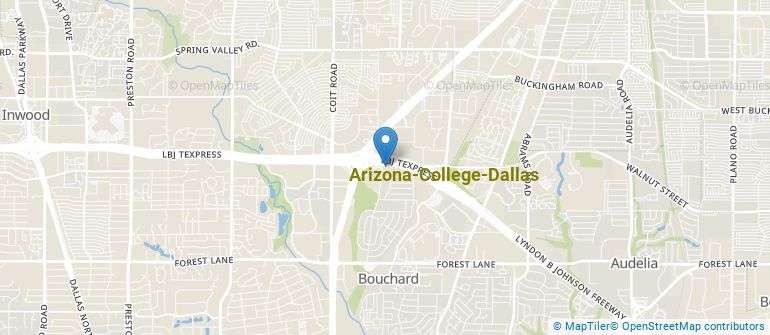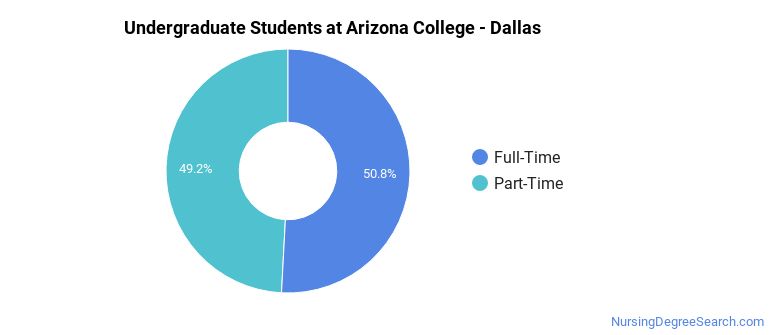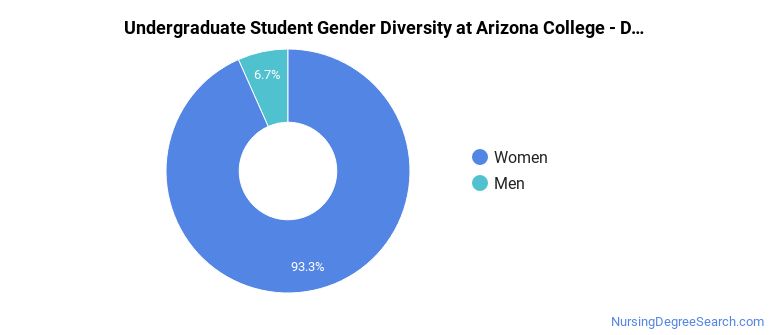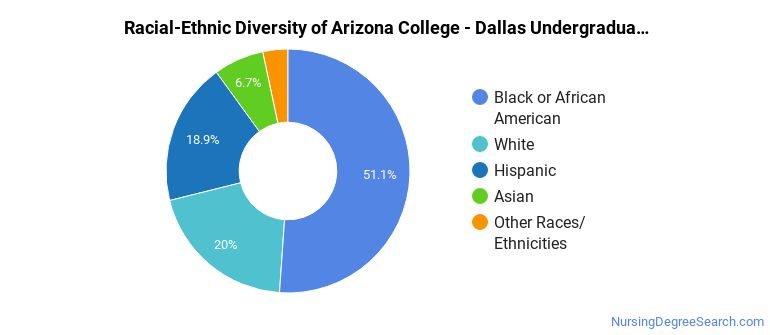Arizona College - Dallas Nursing Programs
Arizona College - Dallas is a private for-profit institution located in Dallas, Texas. The surrounding area of the school is a good match for students who enjoy city life.
Where Is Arizona College - Dallas?

Contact details for Arizona College - Dallas are given below.
| Contact Details | |
|---|---|
| Address: | 8330 Lbj Freeway Suite 100, Dallas, TX 75243-1200 |
| Phone: | 855-706-8382 |
| Website: | www.arizonacollege.edu |
Admission Requirements for Arizona College - Dallas
| Submission | Required? |
|---|---|
| High School GPA | 1 |
| High School Rank | 3 |
| High School Transcript | 1 |
| College Prep Program | 3 |
| Recommendations | 3 |
| SAT or ACT Scores | 3 |
| TOEFL | 3 |
How Hard Is It To Get Into Arizona College - Dallas?
Approximately 6% of accepted students are men and 94% are women. The acceptance rate for men is 100%, and the acceptance rate for women is 100%.
Can I Afford Arizona College - Dallas?
Student Loan Debt
It's not uncommon for college students to take out loans to pay for school. In fact, almost 66% of students nationwide depend at least partially on loans. At Arizona College - Dallas, approximately 100% of students took out student loans averaging $9,513 a year. That adds up to $38,052 over four years for those students.
Arizona College - Dallas Undergraduate Student Diversity

Gender Diversity
Of the 90 full-time undergraduates at Arizona College - Dallas, 7% are male and 93% are female.

Racial-Ethnic Diversity
The racial-ethnic breakdown of Arizona College - Dallas students is as follows.

| Race/Ethnicity | Number of Grads |
|---|---|
| Asian | 6 |
| Black or African American | 46 |
| Hispanic or Latino | 17 |
| White | 18 |
| International Students | 0 |
| Other Races/Ethnicities | 3 |
Arizona College - Dallas Nursing Concentrations
The table below shows the number of awards for each concentration.
| Major | Bachelor’s | TOTAL |
|---|---|---|
| Registered Nursing | 32 | 32 |
| TOTAL | 32 | 32 |
References
*The racial-ethnic minorities count is calculated by taking the total number of students and subtracting white students, international students, and students whose race/ethnicity was unknown. This number is then divided by the total number of students at the school to obtain the racial-ethnic minorities percentage.
More about our data sources and methodologies.
